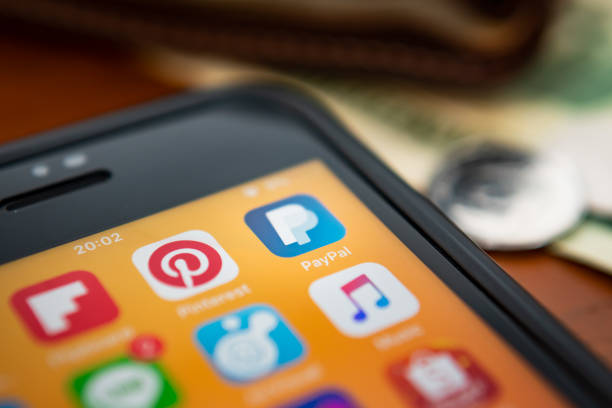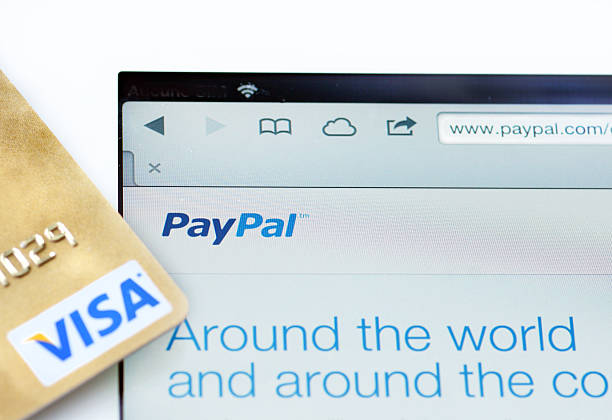In today’s digital age, online transactions have become a staple of daily life, with PayPal standing out as one of the most popular and trusted platforms for sending and receiving money. However, with its widespread use comes an increased risk of scams and fraud. Also, protecting yourself from PayPal scams is essential to ensure your financial security and peace of mind. So, this blog post will provide you with comprehensive tips and strategies to safeguard yourself against scams and fraud.
Understanding PayPal Scams
Before diving into the protection strategies, it’s crucial to understand the types of PayPal scams that exist. Additionally, scammers employ various tactics to trick users into divulging their personal and financial information. So, here are some common scams:
1. Phishing Emails
Phishing is one of the most prevalent scams. So, scammers send emails that appear to be from PayPal, asking you to verify your account information or resolve an issue. Also, these emails often contain links that lead to fake websites designed to steal your credentials.
2. Fake Payment Notifications
In this scam, you receive an email or message claiming that you’ve received a payment. However, when you check your PayPal account, the payment is not there. So, the goal is to trick you into sending goods or money without actually receiving payment.
3. Overpayment Scams
Scammers may “accidentally” overpay you for an item and ask for a refund of the excess amount. Additionally, after you refund the overpayment, you might discover that the original payment was made with a stolen credit card or a fraudulent account, leaving you out of pocket.
4. Shipping Address Change
A buyer asks to change the shipping address after you’ve received payment. They may then claim they never received the item, resulting in you losing both the product and the payment.
5. Fake Charities and Fundraisers
Scammers exploit people’s generosity by creating fake charity accounts or fundraisers. They might use emotionally charged stories to compel you to donate, but the funds go straight into their pockets.
Protecting Yourself from PayPal Scams
Now that you’re aware of the common types of scams, let’s delve into the strategies to protect yourself.
1. Be Wary of Suspicious Emails
Phishing emails are designed to look convincing, but there are often telltale signs that they are fraudulent. So, here are some tips to help you identify and handle phishing emails:
- Check the Sender’s Email Address: Emails will always come from an official PayPal domain (e.g., @paypal.com). Also, be cautious of slight variations or misspellings.
- Look for Generic Greetings: It will address you by your full name, not with generic terms like “Dear User” or “Dear Customer.”
- Inspect the Content: Phishing emails often contain urgent language, grammatical errors, and requests for personal information. Additionally, it will never ask for sensitive information via email.
- Hover Over Links: Before clicking any link, hover over it to see the actual URL. If it looks suspicious or doesn’t match PayPal’s official website, do not click it.

2. Enable Two-Factor Authentication (2FA)
Two-factor authentication adds an extra layer of security to your PayPal account. Even if someone manages to obtain your password, they would still need access to your second factor (usually a code sent to your phone) to log in. To enable 2FA:
- Log in to your account.
- Go to “Settings” and select “Security.”
- Click on “Set Up” next to “2-step verification” and follow the instructions.
3. Regularly Monitor Your Account – PayPal
Frequent monitoring of your account can help you quickly identify unauthorized transactions. So, set aside a few minutes each week to review your recent transactions. Also, if you notice anything suspicious, report it to PayPal immediately.
4. Use Secure Passwords
A strong password is your first line of defense against unauthorized access. So, follow these guidelines to create a secure password:
- Length and Complexity: Use at least 12 characters, including uppercase and lowercase letters, numbers, and special characters.
- Avoid Common Phrases: Do not use easily guessable passwords such as “password123” or “qwerty.”
- Unique Passwords: Use a different password for each of your online accounts to prevent a single breach from compromising multiple accounts.
- Password Manager: Consider using a password manager to generate and store complex passwords securely.
5. Be Cautious with Payments – PayPal
When selling goods or services online, take precautions to ensure you receive legitimate payments:
- Verify the Buyer: Research the buyer if possible, especially for high-value transactions. So, look for reviews or feedback from other sellers.
- Avoid Overpayments: Be wary of buyers who overpay and request a refund of the excess amount. Also, this is often a red flag for a scam.
- Confirm Payment: Ensure the payment has cleared in your PayPal account before shipping any items. PayPal will notify you when the funds are available.

6. Secure Your Devices
Protecting your devices is crucial to maintaining the security of your PayPal account. So, follow these tips to safeguard your devices:
- Use Antivirus Software: Install reputable antivirus software and keep it up to date to protect against malware and viruses.
- Update Software: Regularly update your operating system and applications to patch security vulnerabilities.
- Enable Firewall: Ensure your device’s firewall is enabled to block unauthorized access.
- Avoid Public Wi-Fi: Public Wi-Fi networks are often less secure. Additionally, avoid accessing your account on public networks, or use a VPN for added security.
7. Report Suspicious Activity
If you encounter any suspicious activity or believe you’ve been targeted by a scam, report it to PayPal immediately. Also, it has a dedicated fraud prevention team that investigates and addresses fraudulent activities. To report suspicious activity:
- Log in to your account.
- Go to the “Resolution Center.”
- Follow the prompts to report the issue.
8. Stay Informed
Staying informed about the latest scams and fraud tactics is essential to protecting yourself. Also, it regularly updates its security features and provides information on current scams. Visit the PayPal Security Center for resources and tips on staying safe online.

Conclusion: PayPal
Protecting yourself from PayPal scams and fraud requires vigilance and proactive measures. By being aware of common scams, enabling security features, and practicing safe online habits, you can significantly reduce your risk of falling victim to fraud. Remember, your financial security is in your hands. Stay informed, stay cautious, and stay safe.
PayPal is a secure platform when used correctly. However, scammers are always looking for ways to exploit users. By following the tips outlined in this blog post, you can protect yourself and enjoy the convenience of PayPal without the worry of fraud. Stay vigilant, and don’t let scammers take advantage of your hard-earned money.









[…] PayPal: Known for its global reach, PayPal is a trusted option for businesses looking to accept payments online. Also, its features include invoicing, recurring payments, and integration with various e-commerce platforms. […]
[…] integrates with popular payment gateways like PayPal, Stripe, and credit card processors. This makes it easy for clients to pay their invoices online, […]
[…] Prevention Services: Many banks offer additional fraud prevention services, such as transaction limits, IP whitelisting, and device recognition. These […]
[…] Trust, reliability, and calm. Popular among tech and finance brands like Facebook and PayPal, blue often instills a sense of […]